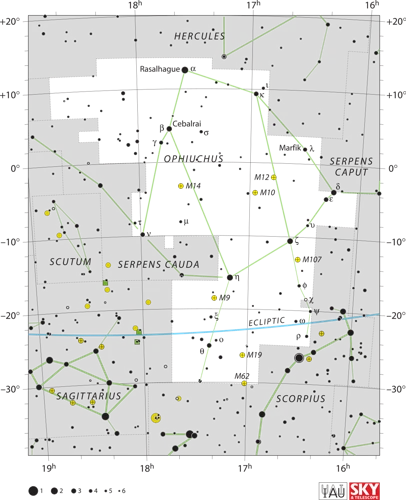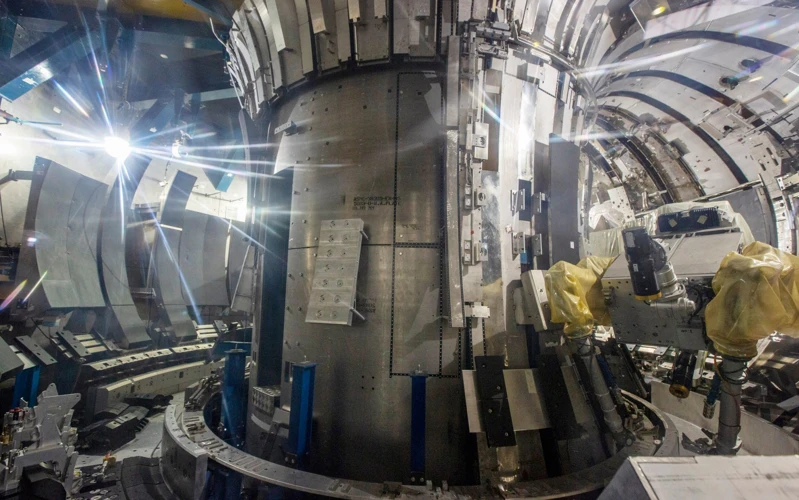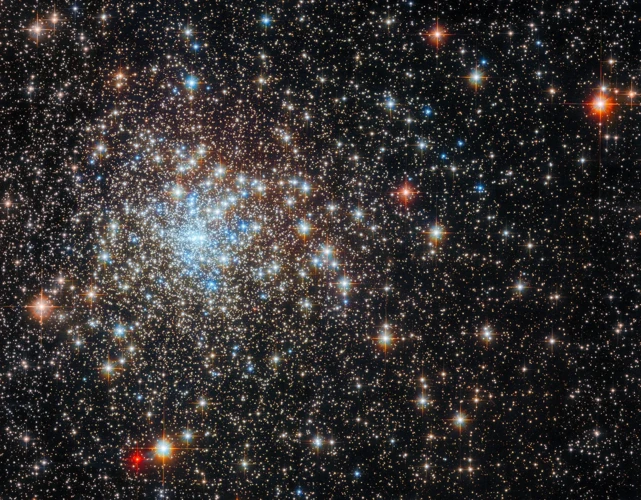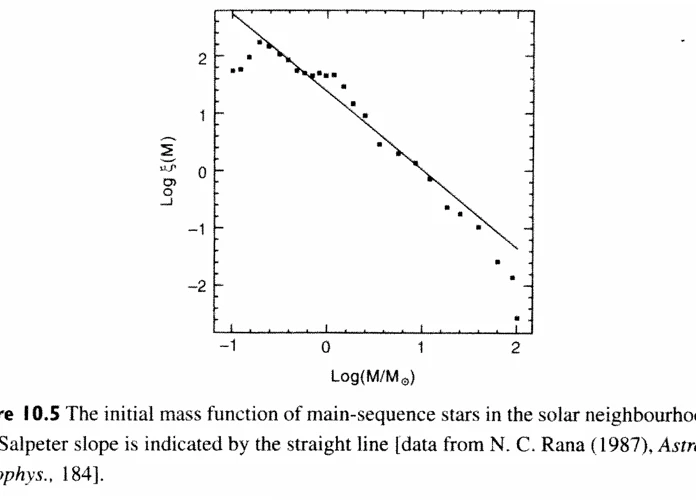Imagine a delicate dance in the depths of space, where stars maintain a delicate equilibrium between the forces of gravity and the fiery power of nuclear fusion. These celestial performers are known as main sequence stars, and their lifelong balancing act is both awe-inspiring and crucial to their survival. In this article, we will explore the characteristics of main sequence stars, delve into the intricate details of their energy source through nuclear fusion, uncover the stages of their stellar evolution, examine the hierarchy of forces that maintain their stability, and ultimately gain a deeper understanding of the intricate balancing act that keeps these celestial entities shining bright in the vast expanse of the universe.
Contents
- Characteristics of Main Sequence Stars
- The Energy Source: Nuclear Fusion
- Stellar Evolution
- Stability and the Hierarchy of Forces
- The Balancing Act: Equilibrium
- Conclusion
-
Frequently Asked Questions
- What are main sequence stars?
- How are main sequence stars classified?
- What is the Hertzsprung-Russell diagram?
- How do temperature and color relate to main sequence stars?
- What is nuclear fusion?
- What happens during hydrogen burning in main sequence stars?
- What is helium burning?
- How do main sequence stars form?
- How long do main sequence stars typically stay on the main sequence?
- What happens to main sequence stars after they leave the main sequence?
- References
-
Frequently Asked Questions
- Why are main sequence stars important?
- How are main sequence stars classified?
- What determines a main sequence star’s lifespan?
- How do main sequence stars generate energy?
- Can main sequence stars run out of fuel?
- Can main sequence stars grow in size?
- What happens to main sequence stars after they leave the main sequence?
- What role does gravity play in maintaining the stability of main sequence stars?
- How does nuclear fusion in main sequence stars create a balance of forces?
- Can main sequence stars ever lose their stability?
- References
- Read More
Characteristics of Main Sequence Stars

Main sequence stars exhibit a variety of intriguing characteristics that distinguish them from other stellar objects. One of the most fundamental tools used to study these stars is the Hertzsprung-Russell (H-R) diagram, which plots a star’s luminosity against its temperature. By analyzing this diagram, astronomers can determine a main sequence star’s stage of evolution and predict its future path. Temperature and color are also noteworthy characteristics of main sequence stars, as they are closely related. The temperature of these stars ranges from around 2,500 to 50,000 Kelvin, resulting in colors that span a wide spectrum, from cool red to hot blue. Additionally, the mass and size of a main sequence star play a crucial role in determining its overall behavior and lifespan. Higher-mass main sequence stars tend to be more luminous and shorter-lived, while lower-mass stars have the opposite characteristics. Understanding these essential characteristics allows astronomers to grasp the intricacies of main sequence stars and further our knowledge of the universe’s vast complexity.
The Hertzsprung-Russell Diagram
The Hertzsprung-Russell (H-R) diagram is an invaluable tool used by astronomers to gain insights into the properties and evolutionary stages of main sequence stars. This diagram plots a star’s luminosity (brightness) against its temperature. The location of a star on the H-R diagram reveals crucial information about its stage of evolution and predicts its future path. The diagram is divided into different regions, each representing various types of stars. The main sequence, where the majority of stars reside, runs diagonally across the diagram from the top-left (high temperature, high luminosity) to the bottom-right (low temperature, low luminosity). Stars in this region are undergoing stable hydrogen fusion in their cores. The H-R diagram also enables astronomers to identify other types of stars, such as giants, supergiants, white dwarfs, and even exotic celestial objects like neutron stars and black holes. By analyzing the properties of stars plotted on the H-R diagram, astronomers can unravel the mysteries of stellar evolution and gain a deeper understanding of the vast cosmos we inhabit. For a deeper dive into the mystical world of zodiac signs, check out our article on the unraveling mystery of Ophiuchus, the 13th zodiac.
Temperature and Color
Temperature and color are intricately linked when it comes to main sequence stars. The temperature of a star has a direct impact on its color, providing astronomers with valuable insights into a star’s characteristics and behavior. Main sequence stars exhibit a wide range of temperatures, typically ranging from around 2,500 to 50,000 Kelvin. This temperature variation results in stars displaying a diverse array of colors across the electromagnetic spectrum. Cool main sequence stars, with temperatures below 4,000 Kelvin, tend to appear reddish in color, while hotter stars, with temperatures above 10,000 Kelvin, tend to appear bluish in color. This color variation is due to differences in the wavelengths of light emitted by stars at different temperatures. Cooler stars emit more red and infrared light, while hotter stars emit more blue and ultraviolet light. A useful tool for understanding the temperature-color relationship of main sequence stars is the Hertzsprung-Russell (H-R) diagram, which plots a star’s temperature against its luminosity. By analyzing this diagram, astronomers can gain valuable insights into a star’s stage of evolution and its future path. Understanding the temperature and color characteristics of main sequence stars allows scientists to unlock the secrets of these celestial objects and further our understanding of the vast cosmos. Reference /cosmic-connection-aquarius-libra-compatibility/.
Mass and Size
Mass and size are crucial factors that influence the behavior and characteristics of main sequence stars. The mass of a star determines its overall energy production, lifespan, and eventual fate. Higher-mass main sequence stars, often referred to as “O-type” stars, are significantly more massive than lower-mass stars, such as “M-type” stars. These massive stars emit enormous amounts of energy, making them exceptionally bright and hot. Due to their high energy output, they have shorter lifespans compared to their lower-mass counterparts. On the other hand, lower-mass main sequence stars have less energy production, resulting in longer lifespans. These stars, like our sun, fall into the “G-type” category. Despite having lower energy output, they are still capable of sustaining nuclear fusion in their cores for billions of years. When it comes to size, main sequence stars can range from dwarfs to giants. Dwarf stars, such as red dwarfs, are smaller in size and have a relatively lower mass compared to other main sequence stars. Conversely, giant stars, like red giants, are larger and have expanded atmospheres. The size of a star influences its luminosity and surface temperature. Understanding the relationship between mass, size, and other characteristics allows scientists to classify and study different types of main sequence stars, unraveling the complexities of the universe and expanding our knowledge of the cosmic connections that shape our existence. To learn more about the influence of zodiac signs on personality, you can explore our article on how zodiac signs may impact individual traits and behaviors.
The Energy Source: Nuclear Fusion

The energy source that powers the brilliant glow of main sequence stars is none other than the incredible process of nuclear fusion. This extraordinary phenomenon happens deep within the cores of these stars, where extreme temperatures and pressures cause hydrogen atoms to collide and fuse together, forming helium. This fusion process releases an enormous amount of energy in the form of light and heat, propelling these stars to shine brightly across the cosmos. Hydrogen burning, the initial fusion stage, occurs when hydrogen nuclei combine to form helium nuclei, releasing vast amounts of energy in the process. As the star evolves, it moves into the helium burning stage, where helium fuses into heavier elements, such as carbon and oxygen, continuing the energy-production cycle. Nuclear fusion is a crucial mechanism responsible for the sustainability and longevity of main sequence stars, fueling their brilliance and sustaining their celestial dance of equilibrium.
Nuclear Fusion Process
Nuclear Fusion Process: Nuclear fusion is the phenomenal process that powers main sequence stars and sustains their fiery brilliance. This process occurs when two or more atomic nuclei collide with enough energy to overcome the electrostatic repulsion between them, allowing them to merge and form a heavier nucleus. The fusion process primarily involves hydrogen nuclei, which are composed of single protons. The dominant fusion reaction in main sequence stars is the fusion of four hydrogen nuclei to form a single helium nucleus, releasing an enormous amount of energy in the process. This reaction, known as the proton-proton chain, has multiple stages. In the first stage, two protons combine to form a deuterium nucleus, also called a heavy hydrogen nucleus, accompanied by the release of a positron and a neutrino. In the second stage, a deuterium nucleus fuses with another proton to form helium-3, along with the release of a gamma-ray photon. Finally, two helium-3 nuclei undergo a fusion reaction, producing helium-4 and two spare protons, which can then participate in further fusion reactions. This continuous release of energy through nuclear fusion is what sustains the luminosity and stability of main sequence stars throughout their lifespan.
Hydrogen Burning
Hydrogen burning, also known as hydrogen fusion, is a vital stage in the life of a main sequence star. During this process, which takes place within the star’s core, hydrogen atoms are fused together to form helium. The immense gravitational pressure and temperature at the core enable the hydrogen nuclei to overcome their natural repulsion and come close enough for the strong nuclear force to bind them together. This fusion reaction releases an enormous amount of energy in the form of light and heat.
The hydrogen burning process occurs through the proton-proton chain reaction, which is the dominant mechanism for stars like our Sun. In this reaction, four hydrogen nuclei (protons) undergo a series of fusion reactions to produce one helium nucleus. The first step involves two protons fusing to form a deuterium nucleus (one proton and one neutron) while releasing a positron and a neutrino as byproducts.
Next, a proton collides with the deuterium nucleus to form a helium-3 nucleus (two protons and one neutron) while emitting a gamma-ray photon. This helium-3 nucleus can then capture another helium-3 nucleus to create a helium-4 nucleus (two protons and two neutrons) along with two protons. This reaction results in the release of two protons, which can continue to participate in the proton-proton chain to sustain the hydrogen burning process.
Hydrogen burning is responsible for the incredible energy output of main sequence stars. It provides the necessary energy to counteract the force of gravity, maintaining the star’s stability and preventing it from collapsing under its own weight. This process continues throughout the main sequence stage of a star’s life, powering it for millions to billions of years. However, as the hydrogen fuel in the core gets depleted, main sequence stars eventually evolve and undergo further transformations, entering a new phase of stellar evolution.
Helium Burning
When a main sequence star exhausts the hydrogen fuel in its core, it undergoes a dramatic transformation known as helium burning. This is the next stage of nuclear fusion in the life cycle of a star. During helium burning, the star’s core contracts due to the intense gravitational pressure. The high temperatures and pressures cause helium nuclei (alpha particles) to collide and fuse together, forming heavier elements such as carbon and oxygen. This process releases a tremendous amount of energy, which counterbalances the inward pull of gravity and maintains the star’s stability for a period of time.
Helium burning is a vital stage in the evolution of main sequence stars, as it fuels the star with a new source of energy and determines its future fate. The duration of helium burning depends on the mass of the star. Higher-mass stars will have a shorter helium-burning phase compared to lower-mass stars. As the helium fuel in the core is consumed, the balance between the gravitational forces and the outward pressure from nuclear fusion becomes disrupted.
At the end of the helium-burning phase, the core of the star will collapse once again, leading to even more intense conditions. The fate of the star after helium burning depends on its mass. In the case of lower-mass stars, they will undergo further expansions and contractions, transitioning into a red giant phase. For higher-mass stars, the helium-burning phase paves the way for more complex nuclear reactions and the potential to nucleosynthesis even heavier elements.
Understanding the process of helium burning provides valuable insights into the life cycle of main sequence stars and their contribution to the formation of new elements in the universe. It highlights the extraordinary forces at work within these celestial entities, as they continue their lifelong balancing act against the powerful force of gravity.
Stellar Evolution

Stellar evolution is a captivating process that showcases the life cycle of a main sequence star. It begins with the formation of these stars from interstellar gas and dust, brought together by gravity. As the gas and dust collapse under their own weight, a protostar is born. This young protostar continues to contract and heat up until it reaches a point of equilibrium, where nuclear fusion ignites in its core and it becomes a main sequence star. The main sequence phase is the longest stage in a star’s life, where it steadily burns hydrogen into helium through the process of nuclear fusion. However, as the hydrogen fuel depletes, the star’s core contracts, causing the outer layers to expand and cool, resulting in a red giant or supergiant depending on the star’s mass. Eventually, these stars will enter the final stages of their evolution, shedding their outer layers in a supernova explosion and leaving behind fascinating remnants such as neutron stars or black holes. The intricate and awe-inspiring process of stellar evolution serves as a reminder of the wondrous mysteries that lie within the vastness of our universe.
Formation of Main Sequence Stars
The formation of main sequence stars is a captivating process that begins with vast clouds of gas and dust scattered throughout interstellar space. These clouds, known as molecular clouds, are predominantly composed of hydrogen and helium, along with trace amounts of other elements. Within these molecular clouds, regions of higher density form, called nebulae. Under the influence of gravity, these nebulae begin to collapse inward, triggered by external factors such as shockwaves from nearby supernovae or the gravitational pull of a passing object.
As the collapse continues, the core of the nebula grows denser and hotter. Eventually, the temperature and pressure within the core reach a critical point where nuclear fusion can occur. This fusion process ignites, with hydrogen atoms fusing to form helium, releasing an enormous amount of energy in the process. This energetic outburst marks the birth of a main sequence star.
During this phase, the star is still surrounded by a rotating disk of gas and dust known as a protoplanetary disk. Within this disk, smaller concentrations of material begin to clump together due to gravitational attraction, forming planets and other celestial bodies. These nascent planets continue to grow as they sweep up more matter from the disk.
As the main sequence star continues to shine and stabilize, it begins its journey towards the balance of forces that will sustain it throughout its lifespan. The formation of main sequence stars is a mesmerizing spectacle, highlighting the immense power of gravity and nuclear fusion in shaping the cosmos.
Life Span on the Main Sequence
The life span of a main sequence star is determined by its mass, a critical factor in stellar evolution. As a main sequence star, it achieves a delicate balance between the inward gravitational force and the outward pressure force generated by nuclear fusion at its core. This equilibrium allows the star to radiate a constant amount of energy throughout its lifetime. Stars with higher mass have greater gravitational forces and therefore burn fuel at a faster rate, resulting in shorter main sequence lifespans compared to lower-mass stars. For example, massive O-type stars can burn through their hydrogen fuel within a few million years, while smaller stars like red dwarfs can remain on the main sequence for tens or even hundreds of billions of years. The mass of a main sequence star also affects other aspects of its life, such as its surface temperature, luminosity, and color. Understanding the life spans of main sequence stars provides valuable insights into the ongoing processes that shape the universe and help us comprehend the intricate relationship between stellar mass and evolution.
Post-Main Sequence Evolution
After spending a significant amount of time as main sequence stars, these celestial performers eventually exhaust their primary source of fuel, hydrogen, triggering a transformative phase known as post-main sequence evolution. This phase marks a turning point in the star’s life, as it transitions into a new stage where it undergoes remarkable changes and exhibits different behaviors.
One possible post-main sequence evolution path for lower-mass stars, such as our Sun, is the expansion into a red giant. As these stars exhaust their hydrogen fuel, gravitational forces cause their cores to contract while the outer layers expand dramatically. The increase in size leads to a fascinating transformation, as the star’s surface cools and shifts towards a reddish hue, hence the name “red giant.” During this phase, the star becomes much larger in size, potentially engulfing nearby planets and drastically altering the structure of its surrounding stellar system.
For higher-mass stars, the post-main sequence evolution takes a different course. With their immense gravitational forces, these stars undergo a more explosive transformation known as a supernova. When the star’s core collapses under its own weight, it releases an enormous amount of energy and ejects its outer layers into space, creating a breathtaking supernova explosion. This cataclysmic event disperses heavy elements into the universe, which eventually contribute to the formation of new stars, planets, and even life itself.
Additionally, in some cases, after the ejection of the outer layers, the core of a massive star can collapse further, resulting in the formation of a dense object called a neutron star. Neutron stars possess extraordinary properties, such as high density and strong magnetic fields, making them a subject of fascination and study for astronomers.
The post-main sequence evolution opens up a new chapter in the life of a star, leading to spectacular events with far-reaching consequences. Whether it transitions into a red giant or undergoes a dramatic supernova explosion, each star’s post-main sequence evolution is a testament to the awe-inspiring power and complexity of the universe.
Stability and the Hierarchy of Forces

Maintaining stability is essential for main sequence stars, a delicate balance achieved through the interplay of different forces. The hierarchy of forces at work includes gravitational forces, pressure forces, and nuclear forces. Gravitational forces, governed by the star’s mass, pull its matter inward, attempting to compress the star. However, pressure forces generated by hot, ionized gases exert an outward push, countering the gravitational collapse. This equilibrium between gravity and pressure keeps the star from collapsing or expanding uncontrollably. Another force that comes into play is the intense nuclear forces within the star’s core, which fuel the nuclear fusion process. These forces act as a source of energy and counterbalance the gravitational pull, helping to maintain stability. It is this intricate interplay of forces that enables main sequence stars to exist in a state of equilibrium, shining steadily throughout their lives in the vast expanse of the cosmos.
Gravitational Forces
Gravitational forces play a significant role in the delicate balance maintained by main sequence stars. These forces are responsible for holding the star together and determining its overall structure and stability. At the core of a main sequence star, immense gravitational pressure is constantly exerted due to the star’s mass. This pressure causes the gas and plasma within the star to be compressed, leading to high temperatures and densities. The gravitational force also pulls the outer layers of the star inward, creating a state of equilibrium where internal pressure counters the force of gravity. This equilibrium is crucial for main sequence stars to sustain their energy production, as any disruption in this balance could have catastrophic consequences. Without the gravitational force acting as a binding agent, the star would expand or collapse under its own weight, disrupting the delicate energy generation process and potentially leading to its demise. Gravitational forces, therefore, serve as an essential foundation for the stability and longevity of main sequence stars, allowing them to shine brightly throughout their lifespan.
Pressure Forces
Pressure forces play a crucial role in the delicate balancing act of main sequence stars. These forces, also known as hydrostatic equilibrium, are responsible for countering the inward pull of gravity with an outward pressure. In the core of a main sequence star, the tremendous temperature and pressure conditions cause hydrogen atoms to undergo nuclear fusion, releasing an immense amount of energy. This energy radiates outwards, creating an intense pressure that pushes against the force of gravity, preventing the star from collapsing under its own weight. The pressure forces within a main sequence star are maintained by the combined effects of gas and radiation pressure. Gas pressure arises from the collisions between atoms and molecules within the star, while radiation pressure results from the outward flow of energy through the emission of photons. Together, these pressure forces serve as a counterbalance to gravity, ensuring the stability and equilibrium required for a main sequence star to continue shining brightly throughout its lifespan. It’s through the delicate interplay of gravity and pressure forces that these celestial bodies are able to maintain their integrity and sustain the nuclear fusion reactions that power their existence.
Nuclear Forces
Nuclear forces play a pivotal role in the delicate balance that exists within main sequence stars. These forces are the fundamental interactions that bind atomic nuclei together, consisting of the strong nuclear force and the weak nuclear force. The strong nuclear force is responsible for holding protons and neutrons together within the atomic nucleus, overcoming the repulsive electromagnetic force between positively charged protons. This force is incredibly powerful but also has a short range, acting only within the atomic nucleus. On the other hand, the weak nuclear force is involved in certain types of radioactive decay processes, such as beta decay. It is weaker than the strong nuclear force but essential for maintaining stability within atomic nuclei. These nuclear forces work in conjunction with the gravitational and pressure forces to maintain equilibrium within main sequence stars. Without the strength of these nuclear forces, stars would not be able to sustain the intense fusion reactions that provide the energy necessary to counterbalance gravity. Thus, the interplay between nuclear forces and other forces is vital for the stability and longevity of main sequence stars.
The Balancing Act: Equilibrium

The Balancing Act: Equilibrium
Maintaining stellar equilibrium is crucial for main sequence stars, as it involves a delicate balance between various forces at play. Gravitational forces, originating from the star’s mass, pull matter inward. Counteracting this immense inward pull are the pressure forces, generated by the intense heat and energy produced within the star. These pressure forces push outward, preventing the star from collapsing under its own weight. Additionally, nuclear forces come into play, powering the star through the process of nuclear fusion and providing the necessary energy for the entire balancing act to occur. This equilibrium is maintained when gravity and pressure forces are in perfect balance, preventing the star from either expanding uncontrollably or collapsing in on itself. Stellar stability relies on this fine-tuned equilibrium, ensuring that main sequence stars persistently shine bright throughout their lifespan in the vast expanse of the cosmos.
Gravity and Pressure Balance
Maintaining a delicate balance between gravity and pressure is crucial for the stability of main sequence stars. Gravity, the force that pulls matter inward, relentlessly tries to compress the star’s core. On the other hand, pressure, generated by the high temperatures and densities within the star, resists this gravitational collapse. It is this dynamic equilibrium between these two forces that allows main sequence stars to maintain their stellar structure and prevent catastrophic collapse or expansion.
To understand this balance further, imagine a massive sphere of gas in the depths of space. As the gas condenses due to gravity, its temperature and pressure increase. Eventually, at the core of the star, these conditions become favorable for nuclear fusion to occur, initiating a delicate energy-producing dance that counteracts gravity.
The pressure within the star is generated through a combination of gas pressure and radiation pressure. Gas pressure arises from the collisions between particles in the star’s core, while radiation pressure results from photons released during nuclear fusion. Both pressures work together to counteract gravity, preventing the star from collapsing in on itself.
In the core of main sequence stars, where hydrogen fuses into helium, the intense energy released creates a significant radiation pressure. This pressure pushes outward, counterbalancing the inward pull of gravity. The gravitational force attempting to compress the star is met with the resistance of pressure, creating a delicate equilibrium that sustains the star’s stability.
This gravity and pressure balance is crucial to the survival of main sequence stars throughout their lifespan. If the balance were disrupted, the star would either collapse inward under the influence of gravity or expand outward, venting its outer layers into space. Both scenarios would drastically alter the star’s structure and potentially lead to its demise.
The delicate interplay between gravity and pressure forms the foundation of a main sequence star’s stability, allowing it to shine brightly and endure throughout its lifespan. This intricate balancing act remains a testament to the awe-inspiring forces at work within the vast expanse of the universe.
Critical Balance of Energy
In the world of main sequence stars, there is an intricate and delicate balancing act that is maintained through a critical balance of energy. This equilibrium is crucial for the star to remain stable and avoid catastrophic events such as collapse or explosion. This delicate balance of energy is achieved through the interplay of two key forces: gravity and pressure.
Gravity, the force that pulls matter inward, is constantly trying to compress the star. On the other hand, pressure acts as a counterforce, pushing outward and preventing the star from collapsing under its own weight. It is within this interplay between gravity and pressure that the critical balance of energy is maintained.
For a main sequence star to achieve this equilibrium, there must be a delicate harmony between the energy produced by nuclear fusion in the star’s core and the energy radiated away from its surface. If the rate of energy generation exceeds the rate of energy loss, the star would face the risk of overheating and expanding uncontrollably. Conversely, if the rate of energy generation falls short of the rate of energy loss, the star would cool and contract, potentially leading to collapse.
The critical balance of energy is achieved when the energy generated by nuclear fusion matches the energy radiated away, resulting in a stable and self-regulating system. This delicate balance allows the star to maintain its size and temperature, which in turn determines its position on the Hertzsprung-Russell diagram and its overall behavior.
It is fascinating to ponder the incredible precision required for a main sequence star to sustain this critical balance of energy throughout its lifetime. The complexity and elegance of this mechanism highlight the remarkable nature of the universe we inhabit, where even the tiniest adjustments can have profound consequences for the life and stability of a star. The critical balance of energy is just one of the many awe-inspiring aspects of main sequence stars that continue to captivate scientists and stargazers alike.
Stellar Stability
Stellar stability is a critical aspect of a main sequence star’s existence. It is the delicate balance between the gravitational forces pulling inward and the pressure forces pushing outward that keeps a star in equilibrium. If either of these forces were to overpower the other, the star’s stability would be compromised, and its fate could be catastrophic.
The gravitational forces within a star are immense, as they are responsible for holding the star’s mass together. Gravity pulls matter toward the star’s center, creating a strong inward force. On the other hand, pressure forces, fueled by the intense heat generated by nuclear fusion, counteract gravity by pushing matter outward. These pressure forces arise from the energy released during the fusion process, generating immense radiation and particle pressure within the star.
To maintain stellar stability, there must be a delicate balance between these opposing forces. If gravity becomes too dominant, the star will collapse under its own weight, resulting in a gravitational collapse and the potential formation of a black hole. On the other hand, if pressure forces become too dominant, the star will expand and diffuse its energy, reducing its luminosity. This can lead to a loss of equilibrium and a transition into a different stage of stellar evolution.
The maintenance of stellar stability is crucial for a main sequence star to continue shining steadily. It is this equilibrium that allows main sequence stars to burn their nuclear fuel steadily over billions of years, illuminating the cosmos with their radiant light. However, variations in stellar stability can occur, leading to phenomena such as pulsations or even violent eruptions, altering the star’s luminosity and behavior. Understanding the complex dynamics of stellar stability is vital for unraveling the mysteries of these celestial entities and comprehending the delicate balance that keeps them steadfast in the vastness of the universe.
Conclusion

In conclusion, the study of main sequence stars offers us a profound glimpse into the delicate balance that governs the universe. We have explored the characteristics of these stars, from their placement on the Hertzsprung-Russell diagram to their temperature and color variations. Additionally, we have delved into the energy source that powers these celestial entities: nuclear fusion. The fusion process, which involves the burning of hydrogen and helium, provides the necessary fuel for main sequence stars to shine brightly throughout their lifespan. We have also discussed stellar evolution, highlighting the formation of main sequence stars, their life span on the main sequence, and their eventual transition into post-main sequence phases. Furthermore, we have examined the stability of main sequence stars, understanding the roles of gravitational, pressure, and nuclear forces in maintaining their equilibrium. Through this exploration, we come to appreciate the intricate dance of forces that allows main sequence stars to exist. It is through their lifelong balancing act that these stars contribute to the vast tapestry of the universe, illuminating our understanding of stellar phenomena and guiding our quest for celestial knowledge.
Frequently Asked Questions

What are main sequence stars?
Main sequence stars are stars that are in the longest and most stable phase of their lives. They fuse hydrogen atoms in their cores to form helium, which releases energy and causes the stars to shine.
How are main sequence stars classified?
Main sequence stars are classified based on their temperature, color, mass, and size. These properties determine their position on the Hertzsprung-Russell diagram, helping astronomers understand their stage of evolution and behavior.
What is the Hertzsprung-Russell diagram?
The Hertzsprung-Russell diagram is a graphical representation of stars plotted based on their luminosity (brightness) and temperature. It helps astronomers study stellar evolution and classify stars according to their life stage.
How do temperature and color relate to main sequence stars?
The temperature of a main sequence star determines its color. Cooler stars appear red, while hotter stars appear blue. The range of temperatures among main sequence stars is vast, which directly influences their coloration.
What is nuclear fusion?
Nuclear fusion is the process by which main sequence stars generate energy. It occurs when hydrogen atoms fuse together to form helium, releasing a tremendous amount of energy in the form of light and heat.
What happens during hydrogen burning in main sequence stars?
Hydrogen burning refers to the fusion of hydrogen atoms in the core of a main sequence star. This process releases energy, keeping the star in a state of equilibrium.
What is helium burning?
Helium burning is the next phase in stellar evolution after hydrogen burning. In this stage, helium atoms fuse together to form heavier elements. Helium burning occurs in high-mass main sequence stars.
How do main sequence stars form?
Main sequence stars form from the gravitational collapse of giant molecular clouds. These clouds consist of gas and dust, and as they collapse under gravity, they give birth to new stars.
How long do main sequence stars typically stay on the main sequence?
The lifespan of a main sequence star depends on its mass. Higher-mass stars burn through their hydrogen fuel faster and have shorter lifespans, ranging from a few million to a few billion years. Lower-mass stars, like our Sun, can remain on the main sequence for several billion years.
What happens to main sequence stars after they leave the main sequence?
After main sequence stars exhaust their hydrogen fuel, they evolve into different stages depending on their mass. Low-mass stars become red giants, while high-mass stars can undergo supernova explosions or evolve into other types of massive stars.
References
- 22.1 Evolution from the Main Sequence to Red Giants
- Most of the energy from a main sequence star …
- Stars – Imagine the Universe! – NASA
Frequently Asked Questions

Why are main sequence stars important?
Main sequence stars are important because they make up the majority of stars in the universe. They are also the stage in a star’s life cycle where nucleosynthesis occurs, producing elements necessary for the formation of planets and life as we know it.
How are main sequence stars classified?
Main sequence stars are classified based on their spectral type, which is determined by their temperature. The classification system, called the Harvard Spectral Classification, categorizes stars into seven types: O, B, A, F, G, K, M, with O being the hottest and M being the coolest.
What determines a main sequence star’s lifespan?
A main sequence star’s lifespan is determined primarily by its mass. Higher mass stars have more fuel, such as hydrogen, to undergo nuclear fusion and therefore have shorter lifespans. Lower mass stars have less fuel and can burn for billions of years.
How do main sequence stars generate energy?
Main sequence stars generate energy through the process of nuclear fusion. In the core of the star, hydrogen atoms are fused together to form helium, releasing a tremendous amount of energy in the process.
Can main sequence stars run out of fuel?
Yes, main sequence stars will eventually run out of fuel. As the hydrogen in the core is depleted, the star begins to evolve and enter different stages of stellar evolution, depending on its mass.
Can main sequence stars grow in size?
Main sequence stars do not grow significantly in size during their main sequence phase. Their size is determined by a delicate balance between gravitational forces pulling inward and pressure forces pushing outward, which keeps them stable and at a relatively constant size.
What happens to main sequence stars after they leave the main sequence?
After leaving the main sequence, stars enter different stages of post-main sequence evolution. The exact path they take depends on their mass. Higher mass stars may become red giants, supergiants, or even supernovae, while lower mass stars may become white dwarfs or undergo a slower process of stellar death.
What role does gravity play in maintaining the stability of main sequence stars?
Gravity plays a crucial role in maintaining the stability of main sequence stars. It provides the inward force that compresses the star’s core, allowing the temperature and pressure to reach the levels necessary for nuclear fusion to occur.
How does nuclear fusion in main sequence stars create a balance of forces?
Nuclear fusion in main sequence stars creates a balance of forces by generating an outward pressure force that counteracts the inward pull of gravity. This balance of forces allows the star to maintain a stable size and temperature for an extended period.
Can main sequence stars ever lose their stability?
Main sequence stars can lose their stability if the balance between gravity and pressure is disrupted. This can happen when the star runs out of nuclear fuel or if there are sudden changes in its internal structure. In such cases, the star may undergo a dramatic transformation, leading to its eventual demise.
References
- Stars – Main Sequence – ASPIRE
- Most of the energy from a main sequence star …
- 22.1 Evolution from the Main Sequence to Red Giants







